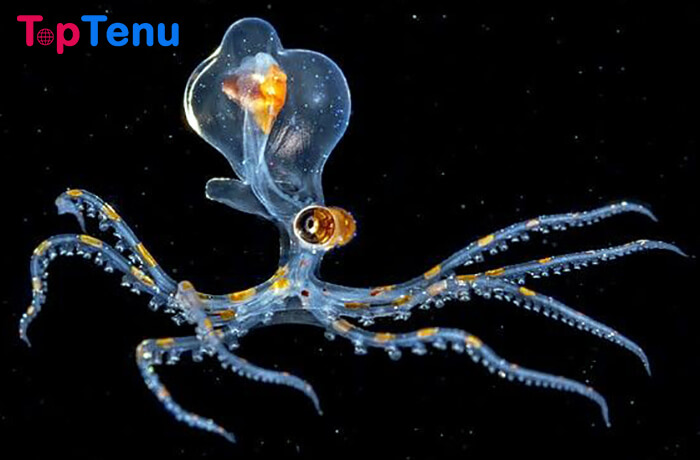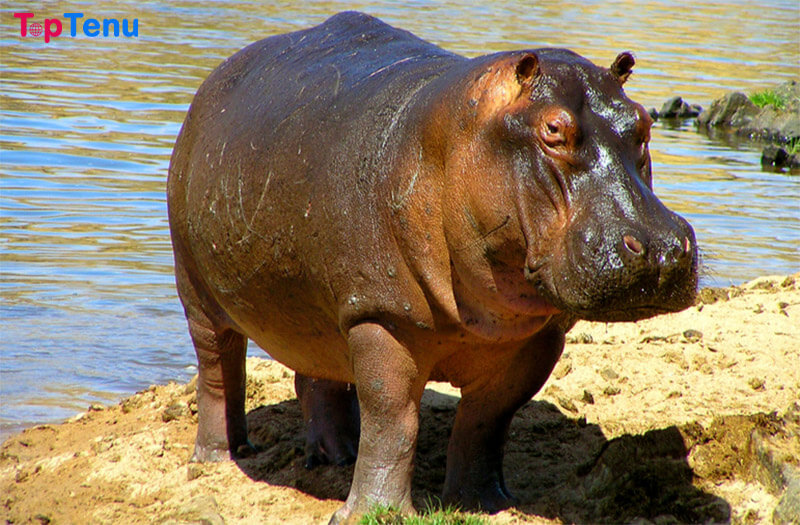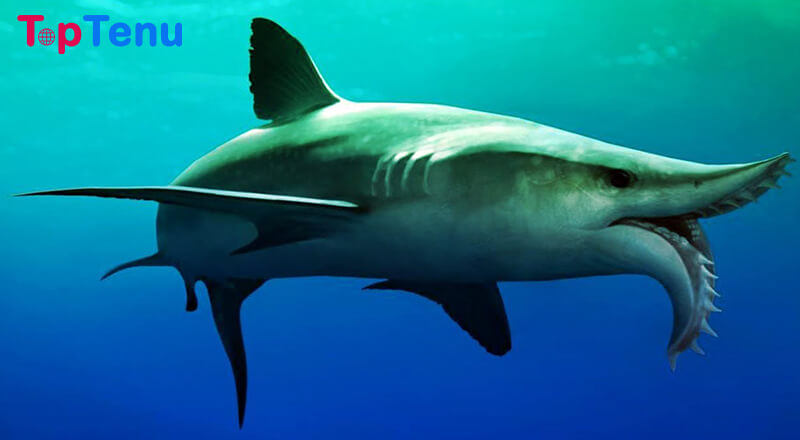5 Animals of Antarctica Explained
5. Antarctic Krill
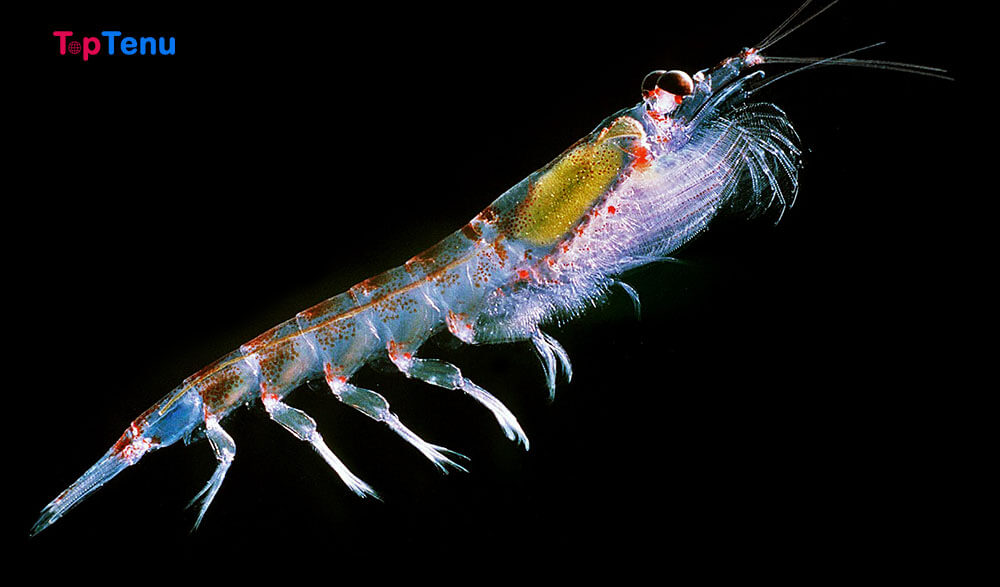
Antarctic krill look like a much smaller version of a prawn. They are transparent with shells that have a red colored tint. Despite their small size, they play a crucial role in sustaining life in Antarctica.
Practically all the other animals who live there (like whales, seabirds, seals, and penguins) depend on krill as a main source of their diet. Without them, the entire food web would be destroyed, and starvation would be inevitable for many species.
You may be wondering, then: what do krill eat in order to survive? They sustain themselves by feeding on microscopic algae found drifting near the surface of the ocean, called phytoplankton. Phytoplankton live off of the sun’s rays and carbon dioxide.
Since Antarctic krill are so small, there needs to be A LOT of them in order for all the other animals to feed. In fact, they’re only about 6 centimeters long and weigh a little over 1 gram. There are estimated to be over 400 million metric tonnes of krill in the waters of Antarctica.
They make feeding easy since they swarm in insanely large numbers. There could be up to 30,000 krill within one cubic meter. All a whale would have to do is open up its mouth as it swims through, and all that krill would easily be consumed.
We know that everything is connected, especially in the animal world. But it is especially clear just how intertwined the existence of every being in Antarctica is. The absence of one species would greatly impact the life of another.
Related: 8 Severe Fishing Accidents in the World
4. Flying Seabirds
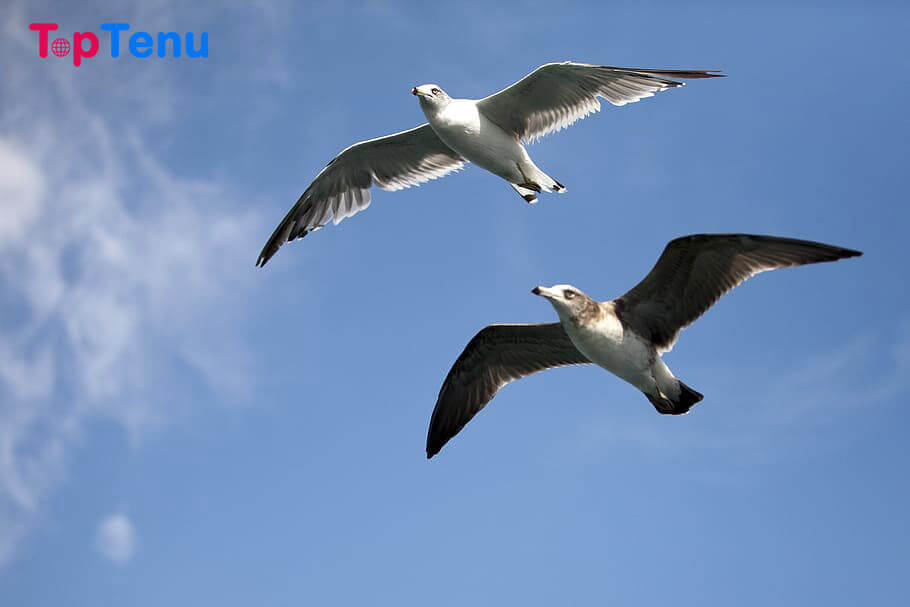
Flying Seabirds. Among them are The Wandering Albatross, Snow Petral, Kelp Gull, Blue-eyed Cormorant, Antarctic Tern, and Skua. There are many species of albatross, but in Antarctica you will mainly find the Wandering Albatross.
It weighs between 8-12 kilograms and has a wingspan of 3 meters. This makes the albatross the largest seabird you’ll see roaming the skies. Their long lifespan of 60 years or more makes up for their low reproductive rates.
They’re known for having one of the lowest rates of reproduction when it comes to a bird. Why is that? Well, most albatrosses take up to ten years before reaching sexual maturity. In addition to that, albatrosses only lay one egg per breeding season, and many will only mate once every two years.
Within 20 days they can cover a distance of up to 10,000 kilometers. Since their wings are so big, albatrosses can stay in the air for hours at a time without flapping their wings. Another amazing seabird you’ll find is the Antarctic Tern.
Visually, it is captivating: with a white (or sometimes grey) body, dark black covering the top of its head, and a bright red beak and feet, it is an exciting sight to see, especially for bird-watching lovers. It’s a medium-sized bird with a wingspan of 74 to 79 centimeters, a body length of 35 to 40 centimeters, and weighs between 150 to 180 grams.
You will practically never see one all on its own—they always seem to be in at least a pair. During breeding season, they may be found in small colonies of 20 pairs. When it comes to their young, they have to keep an eye out for other seabirds, like gulls and skuas. They are the primary threats to their eggs and newly hatched babies.
3. Whales
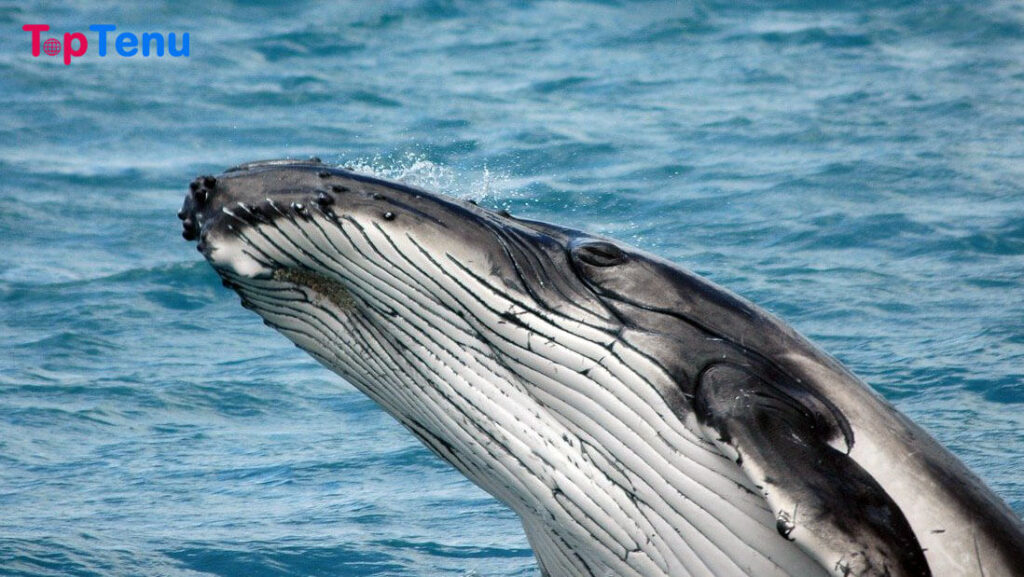
If you ever find yourself on an Antarctic cruise, keep your eyes peeled for one (or more) of the eight different whales that live in the Antarctic waters: Blue Whales, Fin Whales, Humpback Whales, Killer Whales, Minke Whales, Right Whales, Sei Whales, and Sperm Whales.
Did you know that the Blue Whale is the largest animal on the planet? They can weigh up to a whopping 150 metric tonnes (equivalent to over 30 elephants) and can grow to 30 meters in length. Its heart alone weighs approximately the same as a small car, and in order to sustain themselves, they need to eat up to 3.6 metric tonnes of krill every single day.
Humpback Whales are known for their various sounds. They are referred to as “songs,” since these various sounds strung together have rhythm to it. The sound can reach up to 32 kilometers! Humpbacks are considered the most playful whales, as they love to take up acrobats in their free time.
They can jump out of the water and twirl, which is amazing given their 15 meter-length bodies. They like to smack their tails against the water, making a big splash, and can also lift their bodies vertically out of the water. If you find yourself on a boat and a humpback whale comes along, you’re likely to have an amazing encounter.
Wouldn’t it be amazing to see life through a whale’s eyes? Luckily, now we can! Researchers from Oregon State University’s Marine Mammal Institute have been conducting a long-term ecological research program where they investigate the threats to whales from climate change or other human-related incidents.
Tag technology is used to track this. The tags used are placed on the whales using suction cups, making the process non-invasive and harmless. The researchers keep the tags on the whales for up to 48 hours before removing them.
Sensors in the tag track things like the whale’s speed underwater, direction, and movement. Paired with a video camera, they can study what the sensor reported with real video to fully understand the whales’ behavior in the Antarctic.
Related:6 Glowing Alien Fish in the Deep Sea
2. Penguins

There are eight species of penguin found in Antarctica: The Adelie Penguin, Chinstrap Penguin, Gentoo Penguin, King Penguin, Macaroni Penguin, Rockhopper Penguin, Magellanic Penguin, and Emperor Penguin.
Emperor and Adelie penguins exclusively live on the Antarctic continent. Chinstrap, Macaroni, and Gentoo penguins live in northern Antarctica and sub-Antarctic islands. Rockhopper, Magellanic, and King penguins live in the sub-Antarctic.
All penguins have a waterproof coat and a layer of fat that helps them stay insulated. And they need it, because they spend a lot of time hunting in the freezing water. They are made for swimming and can dive deep to look for food.
They eat fish and krill, but sometimes also consume squid, as well. Although on land they waddle slowly, when they’re underwater they can reach speeds between 25 to 40 kilometers per hour. Since they can’t actually fly in the sky, they are jokingly referred to as “flying” underwater.
Out of all the penguins, the Emperor penguin can dive the deepest, at over 500 meters, and can hold its breath for up to 20 minutes. They are also the biggest, reaching a height of 122 centimeters and weigh between 22 to 45 kilograms.
Unlike other penguins, their breeding season is during the winter. Their colonies are enormous, ranging from a hundred to over 20,000 pairs. They are situated on sheets of ice or grounded icebergs, which means that many Emperor penguins never actually set foot on land.
Because of the rapid melting of ice due to climate change, scientists predict that their population will quickly decline in the coming years. Where do Macaroni penguins get their name from? Well, it has nothing to do with the noodles we all know and love.
They got their name because of their prominent, pointy yellow and orange eyebrows. English explorers gave them this name because in the 18th century, English men who wore fancy, feathered hats were referred to as “macaronis.” Since the penguins’ bright eyebrows resembled it, that was the name that was given to them.
1. The pinniped species.( “fin-footed)
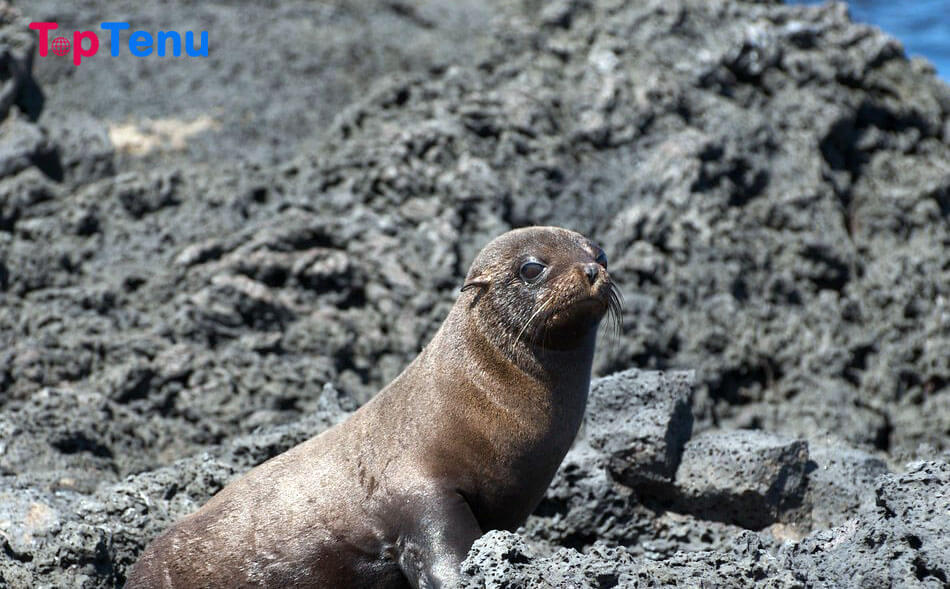
Also known as seals. In Latin, pinniped means, “fin-footed.” There are six types of these carnivorous marine mammals that you will find in Antarctica: The Elephant Seal, Fur Seal, Crabeater Seal, Weddell Seal, Leopard Seal, and Ross Seal.
Generally, the primary source of a seal’s diet is fish, but they also enjoy hunting squid, krill, eel, octopus, and lobster. Leopard Seals are also known to eat penguins and other, smaller seals, as well. Did you know that there are two natural groups of seals?
One group is referred to as earless seals, or “true” seals. The second group is referred to as eared seals for the small flaps that cover their ears. This group also includes sea lions. They spend most of their time in the water, with the ability of holding their breath for up to 30 minutes and diving as deep as 487 meters! The largest is the Elephant Seal.
Males can weigh between 1,500 kilograms and 3,700 kilograms. On the lower end of the scale, that’s equivalent to the weight of a standard car! Females, however, weigh much less than that, between 600 kilograms and 800 kilograms.
The most common seal in Antarctica is the Crabeater Seal. Despite their name, they actually don’t even eat crabs. Their diet mostly consists of krill. Although difficult to pinpoint an exact number, it is believed that there are around 15 million Crabeater Seals.
Apart from humans, they are the most common large mammal in the world. If you ever go on an Antarctic expedition, make sure to watch out for Leopard Seals. They can be aggressive, and although attacks are extremely rare, they can happen.
In 1985, a Scottish explorer, Gareth Wood, was attacked by a Leopard Seal that unsuspectingly crashed through the thin ice he was walking across. It bit into his leg trying to drag him underwater. If it weren’t for Wood’s friends, he would have died.
They rushed over and kicked the seal until it released him. Kirsty Brown wasn’t so lucky. She was a British marine biologist who was attacked and killed by a Leopard seal in 2003 while she was conducting research.
Her colleagues did everything they could to try to rescue her, but once they pulled her out of the water and tried resuscitating her for an hour, it was clear that they had lost her. Brown was the first known human to be killed by a Leopard Seal.
Thanks for reading. Would you rather get stuck in Antarctica for a week or try to survive in the Sahara Desert for a month?

